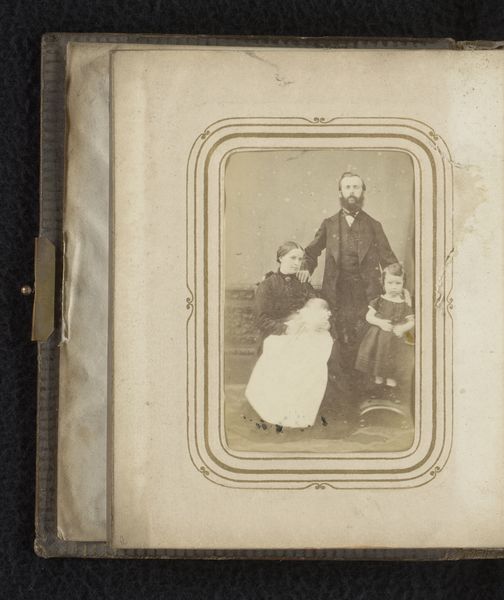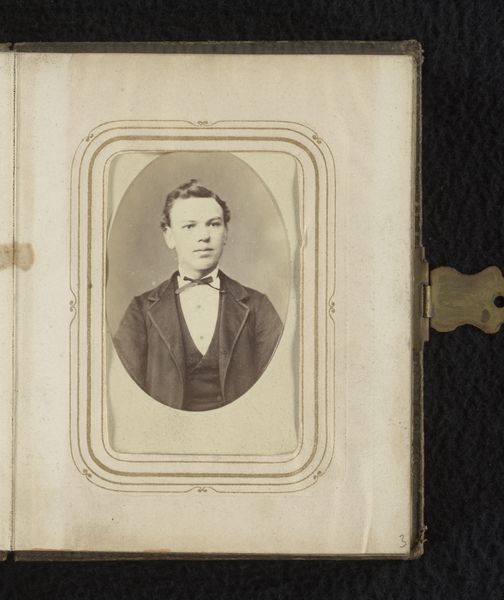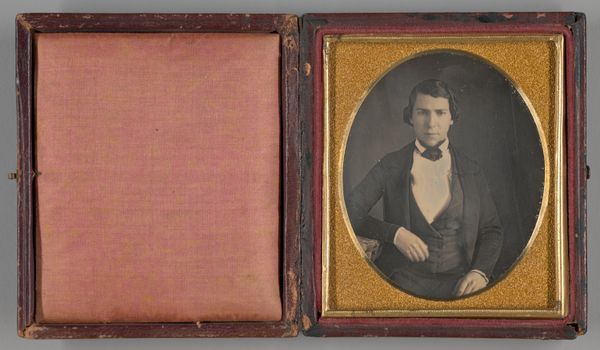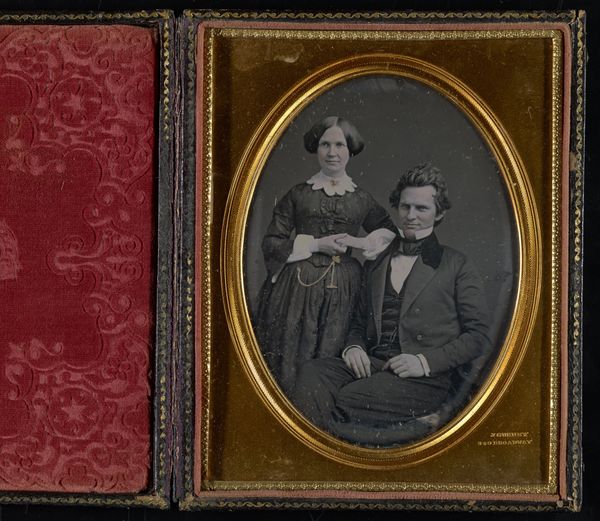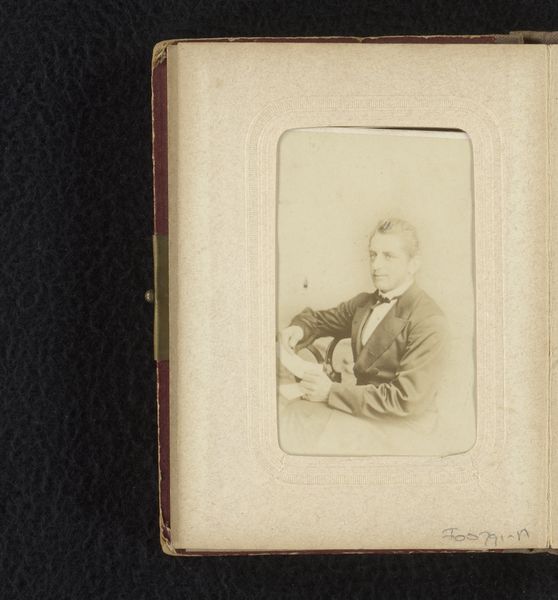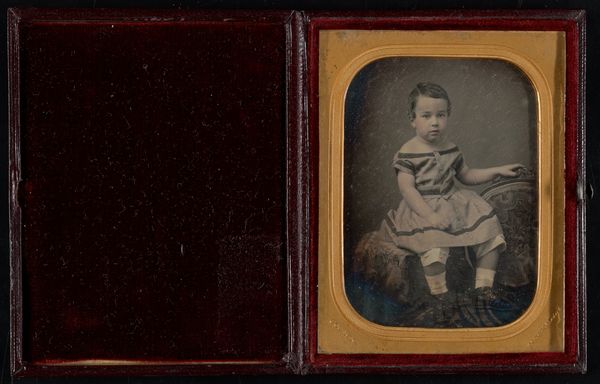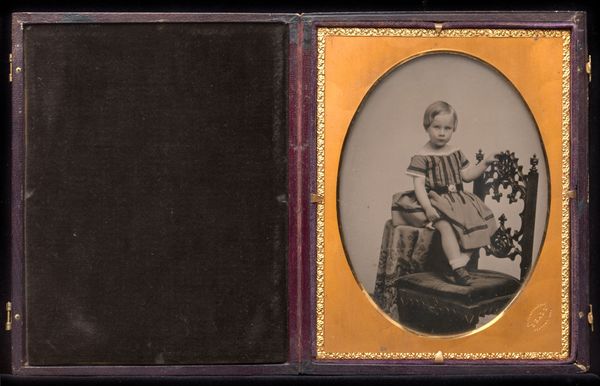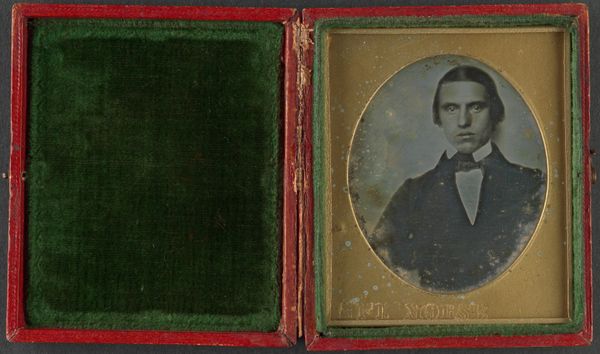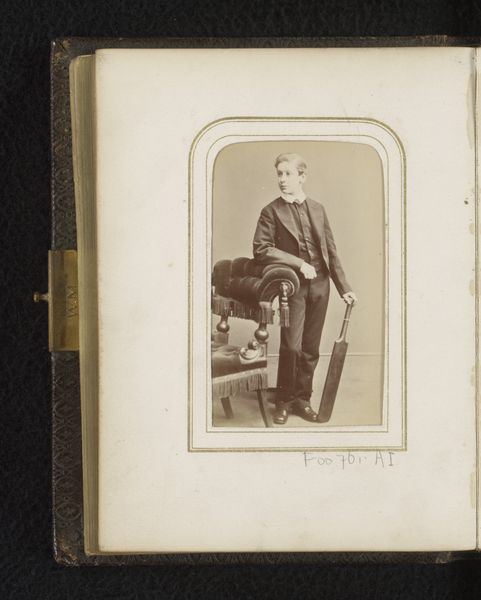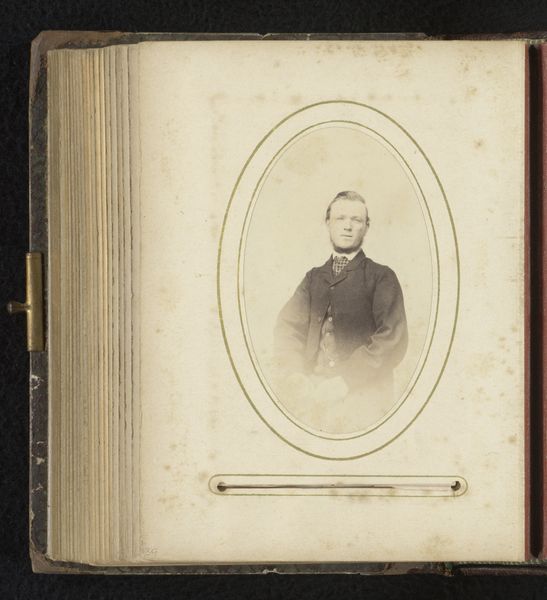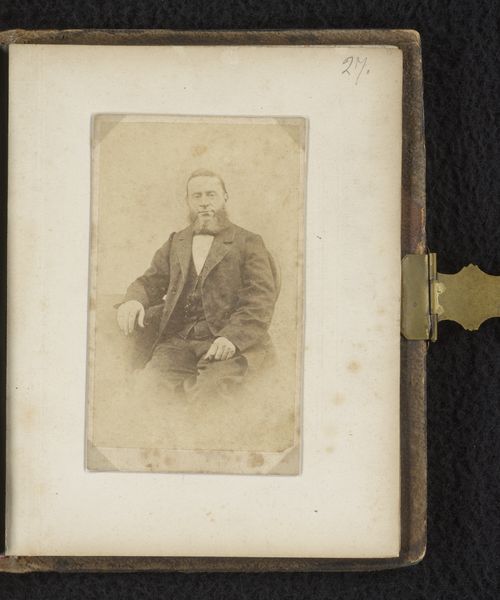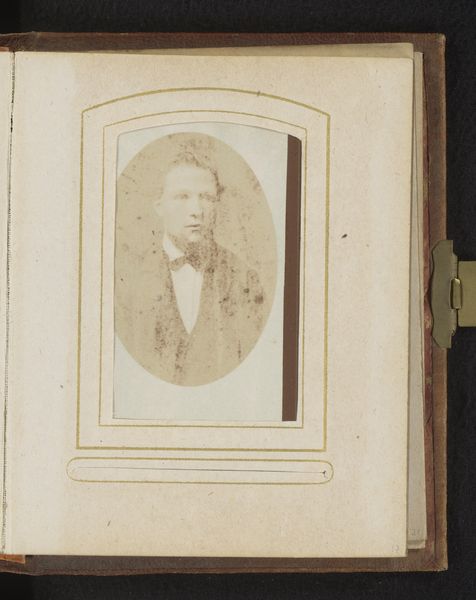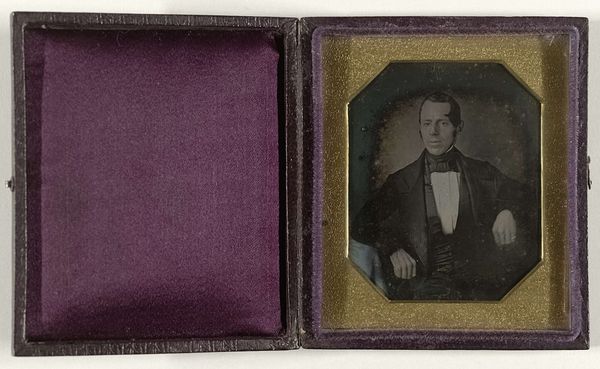
daguerreotype, photography
#
portrait
#
16_19th-century
#
daguerreotype
#
photography
#
romanticism
#
men
Dimensions: Overall: 4 11/16 × 3 11/16 in. (11.9 × 9.4 cm) Image: 3 9/16 × 2 5/8 in. (9.1 × 6.7 cm); visible
Copyright: Public Domain
Curator: Here we have a daguerreotype by John Plumbe Jr., dating from 1839 to 1843. It's a portrait of Dr. Edward Livingston. Editor: What strikes me immediately is the stillness, the almost haunting stillness. The gray scale lends such gravitas to the subject’s features, the lines etched around his eyes... Curator: Yes, daguerreotypes have that captivating stillness. Plumbe, as one of the pioneers of photography in America, understood how to use light and shadow to create a lasting impression. Observe the composition—Livingston is positioned diagonally, leaning against what seems to be a table, creating a sense of relaxed authority. Editor: Authority definitely comes across. I wonder what message he wanted to project. Considering the Romanticism prevalent during the 19th century, did the sitter play a part in influencing this somber aesthetic, a type of quiet and controlled mood? And given that this is a daguerreotype, how much say did Livingston have when a sitting required several minutes? Curator: That’s precisely it! The intersection of societal expectations and photographic technique is fascinating. The limited tonal range—almost a binary of light and dark—accentuates details such as the intricate weave of the fabric draped over the table. His stance projects the subject as a respected member of society, possibly mirroring the role the new medium of photography sought. Editor: It is hard to imagine being a member of the public and being presented with these crystal sharp likenesses; there must have been such allure in that. You get such sharp tonal contrasts which lends such dramatic appeal in addition to the verisimilitude. Do we know much about the patrons or Livingston? Did photography adopt strategies of classical portraiture or painting to convey a particular symbolic status? Curator: Those are astute questions! As for patrons, understanding their motives in commissioning these works reveals much about the era's social fabric. This small-format mirror with memory, as some called it, quickly gained traction due to the democratization of the portrait as compared to traditional painted ones. Perhaps further examination will unlock insights into those conventions. It makes you wonder: will viewers two centuries from now gaze at *our* photographic representations with similar inquisitiveness? Editor: Indeed. Reflecting on this daguerreotype has provided not just a glimpse of one individual but of a world caught between past traditions and emerging possibilities of capturing an image.
Comments
No comments
Be the first to comment and join the conversation on the ultimate creative platform.
